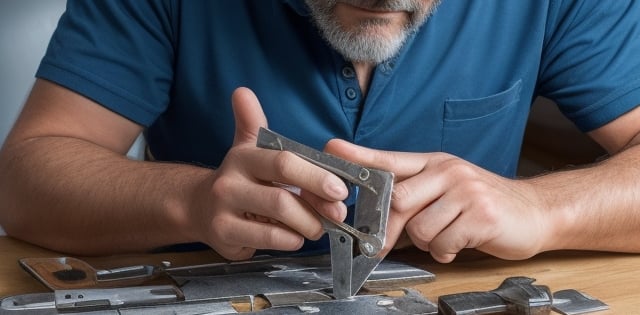Can You Glue Metal to Metal? A Comprehensive Guide
In this blog post, we explore the feasibility of bonding metal to metal using various adhesive types, emphasizing the importance of surface preparation and proper adhesive selection for successful results.
GLUE COMPATIBILITY


Can You Glue Metal to Metal? A Comprehensive Guide
Introduction
If you've ever found yourself in need of joining two pieces of metal together, you might have wondered whether it's possible to use glue as a bonding agent. While welding and soldering are traditional methods for metal-to-metal connections, adhesive bonding is a viable alternative that has gained popularity due to its ease of use and versatility. In this blog post, we'll explore the world of gluing metal to metal and discuss the factors to consider when choosing the right adhesive for the job.
Types of Metal Adhesives
Before diving into the details, it's essential to understand that not all adhesives are created equal, and the success of bonding metal to metal largely depends on choosing the right adhesive for the job. Here are some common types of metal adhesives:
a. Epoxy Adhesives: Epoxy adhesives are known for their high strength and durability, making them a popular choice for bonding metal surfaces together.
b. Cyanoacrylate Adhesives: Also known as super glue, these adhesives are quick-drying and provide strong bonds on metal surfaces. They work best on clean and tightly fitting joints.
c. Polyurethane Adhesives: These adhesives are flexible and are suitable for bonding dissimilar metals. They also have excellent resistance to environmental factors like moisture and heat.
d. Acrylic Adhesives: Acrylic adhesives are versatile and can bond metal to metal as well as other materials. They offer good resistance to chemicals and are suitable for outdoor applications.
Surface Preparation
One of the critical factors in successfully gluing metal to metal is proper surface preparation. To ensure a strong bond, follow these steps:
a. Clean the Surfaces: Remove any dirt, oil, grease, or rust from the metal surfaces using a suitable solvent or abrasive method.
b. Roughen the Surfaces: If the metal surfaces are smooth, consider roughening them with sandpaper or a file to enhance adhesive adhesion.
c. Fitment: Ensure that the metal pieces fit together snugly without any gaps or misalignment.
Application
When applying the adhesive, follow these general steps:
a. Apply a thin, even layer of adhesive to one of the metal surfaces.
b. Press the metal pieces together firmly, ensuring even contact along the entire joint.
c. Use clamps or other fixtures to hold the pieces in place until the adhesive cures.
Curing Time
Different adhesives have varying curing times, so it's essential to follow the manufacturer's instructions. In some cases, you may need to wait for several hours or even days for the adhesive to reach its full strength.
Testing and Safety
Before relying on the bonded metal-to-metal joint for critical applications, it's advisable to conduct some testing to ensure the bond's strength meets your requirements. Additionally, always follow safety precautions when working with adhesives, including proper ventilation and the use of personal protective equipment.
Conclusion
In summary, yes, you can glue metal to metal, but the success of your bond depends on choosing the right adhesive, proper surface preparation, and following the manufacturer's instructions. Adhesive bonding can be a practical and effective method for joining metal pieces, especially when welding or soldering is not an option. Whether you're working on DIY projects or industrial applications, understanding the principles of gluing metal to metal can open up a world of possibilities for your metalworking endeavors.
